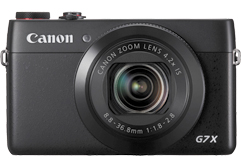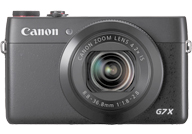
Add to compare

Canon PowerShot G7 X
COMPARISON SELECTION (3 selected items max.)
VIEW COMPARISON
ADD MORE
Scores

71
sensor
Canon PowerShot G7 X side by side comparisons
versus rival model with similar score
Canon PowerShot G7 X
Canon PowerShot G5 X

71
62

vs Nikon model
vs Sony model
Canon PowerShot G7 X
Sony Cyber-shot DSC-RX100 II

71
67

vs Panasonic model
Canon PowerShot G7 X
Panasonic Lumix DMC-FZ1000

71
64

versus rival model with similar score
Canon PowerShot G7 X
Canon EOS 1D Mark III

71
71




